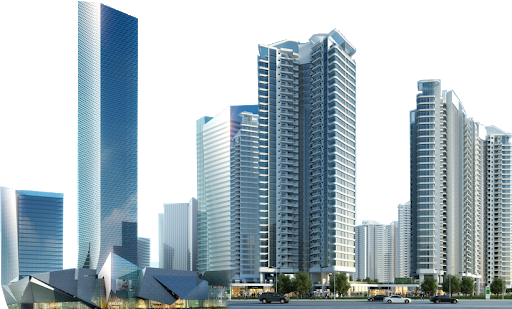
Advantages and Disadvantages of Tall Building - Sanjay Agarwal
1. What is Tall Building
The term 'Tall Building' is relative to the environment under consideration. A four-storey building located among bungalows in an area will easily be described as a tall building in the neighbourhood, and it will be an unarguable assertion. It is like the case of a one-eyed man being a king in the land of blind.
According to Bungale (1988,2010) , tall building cannot be defined in terms of any specific number of floors of storey height, but the dividing line should be where the design of the structure moves from the field of statics to structure dynamics.
Council of Tall Buildings and Urban Habitat (2016) defined a building as being a High Rise when it is considerably higher than the surrounding buildings or its proportion is slender enough to give the appearance of a tall building.
It is very typical for town Planning agencies of municipals, regulatory bodies, standards organizations, and communities to come up with definitions and guidelines on what constitutes a high rise building in their jurisdictions.
For instance, the Tall Building Guidelines of the Town of Milton (2018), Canada,g defined a tall building as a building whose height is greater than the adjacent street right of way or the wider of two streets if the building is located at an Intersection. The right of way widths in Milton includes 35 m Arterials and 47 m regional roads, which means that tall buildings will start at about 11 storeys. But the guideline document acknowledges that a building of 9 storeys will be considered relatively tall, and hence the tall building guidelines should be applied wherever the buildling appears tall in relation to its context.
Old Rock and Park Royal Development Corporation (OPDC, 2018) in London defined a tall building as a building that is above 48 m (say 15 Storeys ) above the Ground Level.
The City of Burlington (2017) in Canada defined a tall building as building with over 11 storeys.
In Russia, tall buildings are those which are atleast 75m High (Generalov et al., 2018)
According to CTBUH, buildings of 300 m to 600m are recognized as supertall Skyscrapers, and those over 600 meters are recognized as Megatall Skyscrapers.
The National Building Code of India (2016) defined a high rise building as a building of height more than 15 m (about 5 storey) (irrespective of its occupancy).
There is no definition or guideline for high rise or tall building in the national Building Code of Nigeria (2006) . Lagos State Urban and Regional Planning Development law (LSURPD,2005) defined a high rise building as a building with more than five floors (including ground floor) and /or those height exceeds 12 m from the ground level.
Summarily, according to Czyriska (2018):
" There is no unambiguous definition of the tall building (skyscraper) in the world, In the US, a skyscraper is considered to be a building exceeding the height of 150 m; in many European countries, this height is much smaller - 35 m. In Poland, technical regulations define two types of tall buildings : high one ( From 25 to 55 m), and high rise buildings (55m above the ground level)........... a tall building is one that dominates in the landscape through the scale-- so that it does not have to be significantly high, but it is clearly above the surrounding building."
From Structure Engineering perspective, a building can be described as a tall building as soon as the affect of lateral forces start getting significant on the behaviour and stability of the structure. This also depend on geographic condition of the area where building is being built.
2. Advantages of Tall Building
- They save space and accommodate more residents as compared to shorter buildings.
- The higher floors are relatively more airy and receive more sunlight.
- Taller buildings are a better option for the idea of a green building since they are more lit, airy and provide more surface area to install solar panels.
- They are much more economical as buying a small land and constructing a tall building is more affordable than purchasing a widespread land.
3. Disadvantages of Tall Building
- The construction of very tall buildings requires highly skilled engineers and architects to design the building, thus increasing the total cost.
- Very tall buildings bear wind forces and seismic forces apart from dead and live loads.
- Buildings above 100 story height face the problem of oscillation, sometimes resulting in crashing of windowpanes (e.g. the case of 200 Clarendon.)
- The foundations of very tall buildings with smaller construction land are under tremendous load and failing of soil may lead to collapse of the building.
- Constant oscillations may give a nauseating feeling to the residents of the building.
Engineers & consultants at Govt job
2ySummarisingly and To be specific the definition of tall / Multistoryed building is as shared below:
Ex-Jt. Director General (Ministry of Defence) • Former Chief Ropeway Inspector of Uttarakhand Govt., Construction Arbitration • 4x Author
2yNice article. Very informative. Congratulations dear Sanjay Agrawal